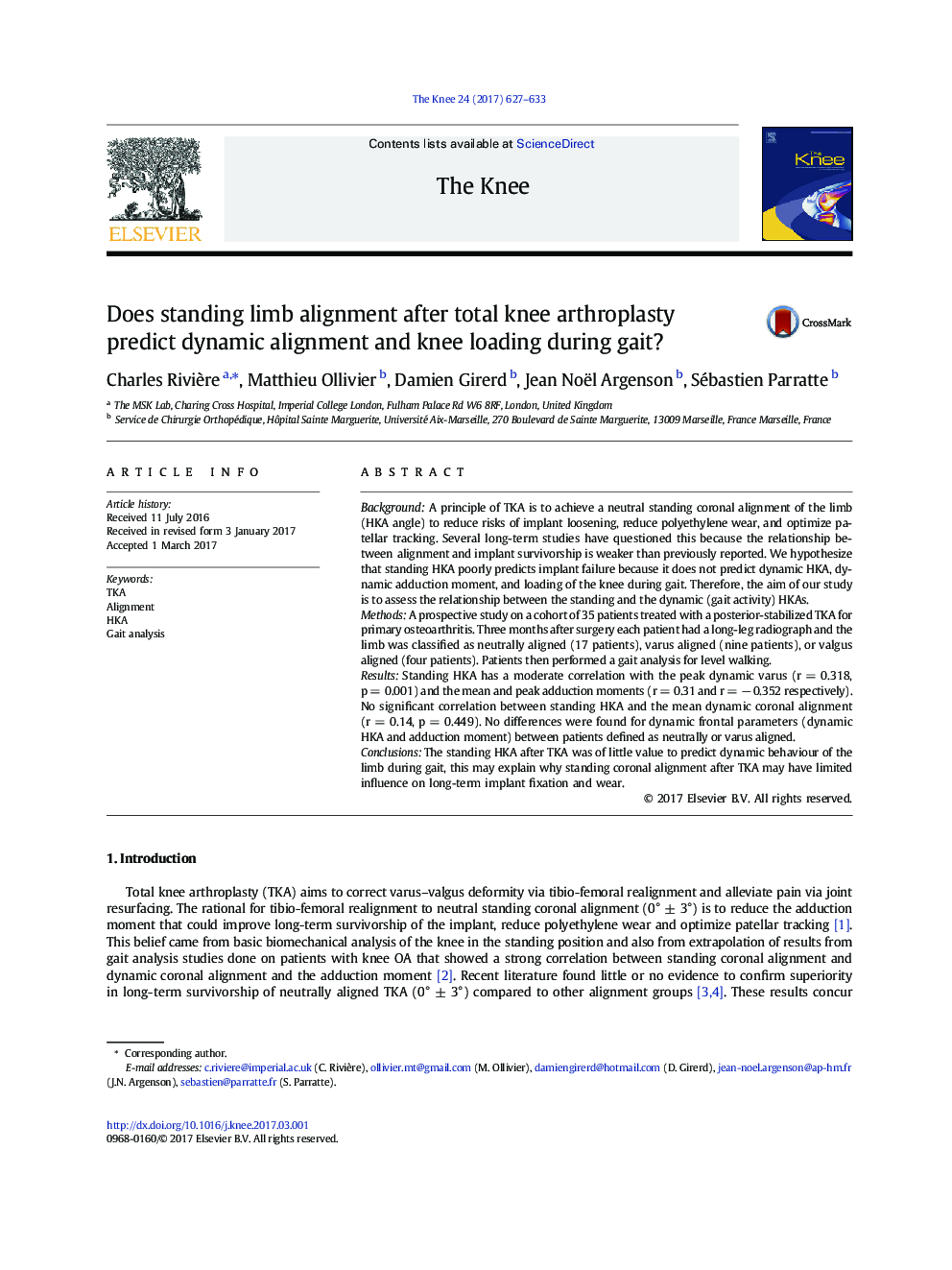| Article ID | Journal | Published Year | Pages | File Type |
|---|---|---|---|---|
| 5710825 | The Knee | 2017 | 7 Pages |
BackgroundA principle of TKA is to achieve a neutral standing coronal alignment of the limb (HKA angle) to reduce risks of implant loosening, reduce polyethylene wear, and optimize patellar tracking. Several long-term studies have questioned this because the relationship between alignment and implant survivorship is weaker than previously reported. We hypothesize that standing HKA poorly predicts implant failure because it does not predict dynamic HKA, dynamic adduction moment, and loading of the knee during gait. Therefore, the aim of our study is to assess the relationship between the standing and the dynamic (gait activity) HKAs.MethodsA prospective study on a cohort of 35 patients treated with a posterior-stabilized TKA for primary osteoarthritis. Three months after surgery each patient had a long-leg radiograph and the limb was classified as neutrally aligned (17 patients), varus aligned (nine patients), or valgus aligned (four patients). Patients then performed a gait analysis for level walking.ResultsStanding HKA has a moderate correlation with the peak dynamic varus (r = 0.318, p = 0.001) and the mean and peak adduction moments (r = 0.31 and r = â 0.352 respectively). No significant correlation between standing HKA and the mean dynamic coronal alignment (r = 0.14, p = 0.449). No differences were found for dynamic frontal parameters (dynamic HKA and adduction moment) between patients defined as neutrally or varus aligned.ConclusionsThe standing HKA after TKA was of little value to predict dynamic behaviour of the limb during gait, this may explain why standing coronal alignment after TKA may have limited influence on long-term implant fixation and wear.
